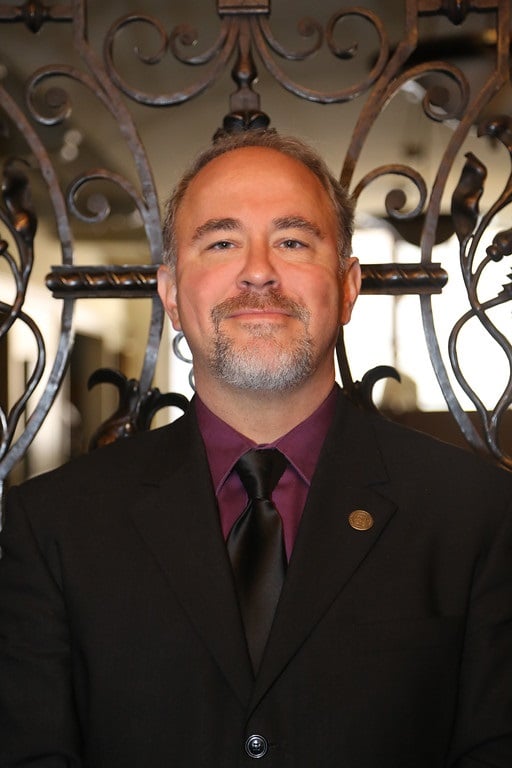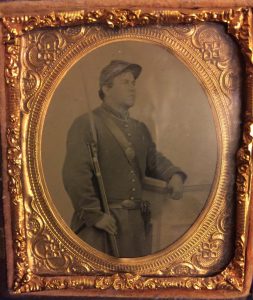I have questioned published history my whole life, and have sought out the stories from the documents or in some cases the source. I was the obnoxious eight-year-old kid who went to Plimouth Plantation and posed my questions to the re-enactor John Alden. I did not ask standard questions like the rest of my class: “What do you do for work?” or “How do you survive without television?” I inquired of Mr. Alden who his parents were and where he was born exactly. The evil look I received back from the modern Mr. Alden was almost as bad as the glare from my second grade teacher before she grabbed me and led me out of the Alden home.
I even chose my favorite character from history
Having a love for history at such a young age puzzled my school friends. I did a book report in the fifth grade on Alfred Poore's nineteenth-century genealogy of my maternal grandmother’s family, A Memoir and Genealogy of John Poore: Ten Generations 1615–1880. My classmates were puzzled that I could have family that arrived in Massachusetts in the 1640s. The concept of a history stretching to great-great-great-great-great-great-great-great-grandparents and the Great Migration was alien to them.
I even chose my favorite character from history – my great-great-great-great-grandfather Captain Jonathan Poor (1737–1807) of the 2nd Essex Militia, who marched on the Alarm of Lexington and Concord on 19 April 1775. Perhaps having lost all my grandparents by the time I was eleven years old made me wish I could travel back in time to know them. Perhaps it was for this very same love of and curiosity about genealogy that I decided to experience the past first-hand and try to understand my ancestors better.
[Seeking] the historical adrenaline rush
My grandmother’s uncle was a Massachusetts drummer boy who was wounded during the Civil War. I felt as a genealogist and historian that I needed to know something more than the textbook definition of a war veteran’s experience. So in 1992 I started re-enacting the Civil War as a private in Co. F., 12th Massachusetts Infantry. About a dozen weekend “Civil War” warriors met and marched in parades, and participated in re-dedications and reburials of Civil War veterans. Training in baseball fields and parking lots did not give me the taste of history I yearned for. For me the height of the historical adrenaline rush was re-enacting the battles.
It was in 1993 at the 130th anniversary of the Battle of Gettysburg that I sensed for a few seconds the intensity and the heat of battle. For a brief moment it was no longer 1993 – it was now 1863. The sightlines of the spectators with popcorn and video cameras vanished from view. Somewhere in the chaos of hundreds of re-enactors, I felt for a few seconds what it might have been like in 1863.
You may ask why I wanted to take my weekend, drive hundreds of miles, and sleep on hay in a makeshift tent? I wanted to honor the memory of my great-great-uncle Charles William Gale (1845–1920) and of all those who perished in and survived the war. This allowed me personally a chance to tell their stories better as a historian, and to begin to understand the hardships they faced – if only for a weekend.
Yes, I researched the guns of the Civil War and tasted the black powder of the musket. In recent years I have been honored to become a member of the New Hampshire Society of the Cincinnati, the General Society of the Sons of the Revolution, and most recently the National Society of the Sons of the American Revolution. As a Civil War re-enactor I carried and fired a 58-caliber 1861 Springfield musket. The Revolutionary War saw the era of flint-lock muskets – I yearned to know what Jonathan Poor carried and fired back in 1775.
While at Colonial Williamsburg in Virginia last week I had a chance to fire both a British “Brown Bess” 69-caliber musket and an eighteenth-century flint-lock fowling piece. With my safety instructions, ear phones, and safety glasses, I was handed a loaded musket and positioned in a state of the art gun range. Out of the fifteen shots I got twelve on the target down the range. I hope my ancestor would be proud that I was a halfway decent shot!
Every experience learning firsthand about the past is an education – a personal education which I hope never stops. To live in the past is not as boring as some might think. I find both the documents and the experience of re-enacting something everyone should try at least once in their life.
Share this:

About David Allen Lambert
David Lambert has been on the staff of NEHGS since 1993 and is the organization’s Chief Genealogist. David is an internationally recognized speaker on the topics of genealogy and history. His genealogical expertise includes New England and Atlantic Canadian records of the 17th through 21st century; military records; DNA research; and Native American and African American genealogical research in New England. Lambert has published many articles in the New England Historical and Genealogical Register, the New Hampshire Genealogical Record, Rhode Island Roots, The Mayflower Descendant, and American Ancestors magazine. He has also published A Guide to Massachusetts Cemeteries (NEHGS, 2009). David is an elected Fellow of the Massachusetts Historical Society in Boston, Mass., and a life member of the New Hampshire Society of the Cincinnati. He is also the tribal genealogist for the Massachuset-Punkapoag Indians of Massachusetts.View all posts by David Allen Lambert →
